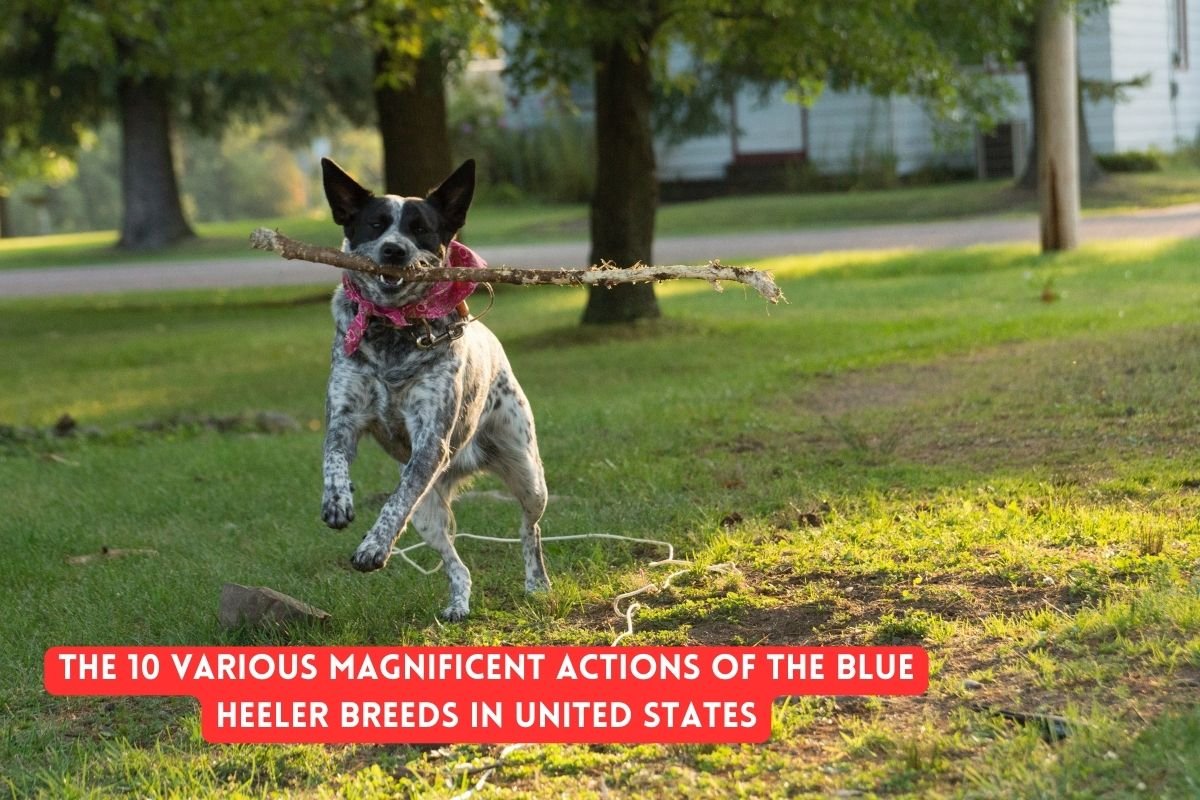The Blue Heeler, also known as the Australian Cattle Dog, is a breed known for its intelligence, agility, and unwavering loyalty. In the United States, Blue Heelers have made their mark not only as beloved companions but also as remarkable performers in various activities and roles. Here are ten magnificent actions where Blue Heelers shine:
Herding
Originating as a herding dog, Blue Heelers excel in guiding and controlling livestock. Their innate herding instincts and boundless energy make them indispensable on farms and ranches across the country.
Agility Competitions
With their athleticism and quick reflexes, Blue Heelers are naturals in agility competitions. They navigate obstacle courses with precision and speed, impressing spectators with their agility and agility.
Search and Rescue
Blue Heelers’ sharp senses and determination make them valuable assets in search and rescue operations. Their ability to cover rugged terrain and track scents aids in locating missing persons and providing assistance in emergency situations.
Therapy Work
Known for their gentle demeanor and intuitive nature, Blue Heelers make excellent therapy dogs. They bring comfort and joy to people in hospitals, nursing homes, and other settings, providing emotional support and companionship.
Obedience Trials
Blue Heelers’ intelligence and eagerness to please make them top contenders in obedience trials. They excel in demonstrating their obedience skills, earning accolades and recognition for their obedience and discipline.
Flyball
Blue Heelers’ love for activity and mental stimulation makes them perfect candidates for flyball, a fast-paced relay race for dogs. Their speed and agility shine as they race over hurdles and retrieve balls, contributing to their team’s success.
Agility Training
Beyond competitions, Blue Heelers benefit greatly from agility training as a form of exercise and mental stimulation. Agility training helps them channel their energy constructively while strengthening the bond between them and their owners.
Canine Sports
Blue Heelers participate in a wide range of canine sports, including disc dog competitions, dock diving, and rally obedience. Their versatility and adaptability enable them to thrive in various sports, showcasing their athleticism and skill.
Service Work
Blue Heelers’ intelligence and trainability make them suitable candidates for service dog roles. Whether assisting individuals with disabilities or performing tasks for veterans, they exhibit dedication and reliability in their service duties.
Companion Animals
Above all, Blue Heelers excel as loyal and devoted companions. Their unwavering loyalty, affectionate nature, and protective instincts endear them to their families, making them cherished members of households throughout the United States.
In conclusion, the Blue Heeler breeds in the United States demonstrate their versatility, intelligence, and devotion across a wide range of activities and roles. Whether working on farms, competing in agility trials, or providing comfort as therapy dogs, Blue Heelers consistently exhibit their magnificent capabilities and leave an indelible mark on the lives of those around them.
FAQs
Are Blue Heelers suitable for families with children?
Yes, with proper training and socialization, Blue Heelers can be excellent family pets, especially in households with active children.
Do Blue Heelers require a lot of exercise?
Yes, Blue Heelers are highly energetic dogs that need regular exercise to keep them mentally and physically stimulated.
Are Blue Heelers prone to any health issues?
Blue Heelers can be prone to hip dysplasia, progressive retinal atrophy, and deafness. Regular veterinary check-ups are essential for maintaining their health.
Do Blue Heelers shed a lot?
Yes, Blue Heelers have a short double coat that sheds moderately year-round. Regular grooming can help minimize shedding.
What is the average lifespan of a Blue Heeler?
The average lifespan of a Blue Heeler is around 12 to 16 years, depending on various factors such as genetics, diet, and overall health care.
